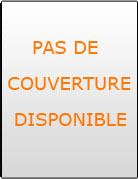Disorders of the Thyroid Gland - 22/08/11
Key Points |
• | Thyroxine (T4) and triiodothyronine (T3), produced by the thyroid gland, are iodinated derivatives of tyrosine. |
• | Most circulating thyroid hormones are bound to one of several plasma proteins, the most important of which is thyroxine-binding globulin (TBG), which accounts for 70% of circulating hormone. |
• | Circulating T3 accounts for most of the physiologic activity of thyroid hormone. |
• | The primary internal regulation of thyroid activity is through the anterior pituitary gland by way of thyrotropin-releasing hormone (TRH) released by the hypothalamus. |
• | The most effective biochemical study for assessing thyrometabolic status is through measurement of thyrotropin (thyroid-stimulating hormone [TSH]). |
• | The greatest clinical value of thyroglobulin measurement (TBG) is in the management of patients with differentiated thyroid cancer. |
• | Circulating thyroid antibodies, antimicrosomal and antithyroglobulin, are usually present in patients with autoimmune thyroid disease. |
• | The principal usefulness of the radioactive iodine uptake study is to differentiate hyperthyroidism into high-uptake and low-uptake states. |
• | A palpable, hypofunctional nodule in the presence of Graves’ disease should be regarded as highly suspicious for harboring malignancy. |
• | A patient with Graves’ disease, manifesting thyroid ophthalmopathy, should be treated with surgery and not radioactive iodine ablation to avoid complicating the ocular problems attributable to the disease. |
• | Acute or subacute thyroiditis may be treated with salicylates or nonsteroidal anti-inflammatory drugs. If the thyroiditis is resistant to these medications, a trial of prednisone may be considered. |
• | Acute suppurative thyroiditis is most commonly caused by staphylococcal and streptococcal species of bacteria. |
• | Toxic thyroid adenoma may be effectively treated by surgical resection, leaving a normally functioning thyroid remnant. |
• | Medical treatment for acute life-threatening thyrotoxicosis (thyroid storm) is antithyroid medication, propranolol to reduce peripheral effects of T3, and glucocorticoid administration to combat cortisol degradation. |
• | Myxedema coma, a late manifestation of hypothyroidism, is managed with administration of large doses of intravenous T4 and hydrocortisone. |
Plan
© 2010 Elsevier Inc. Tous droits réservés.
Bienvenue sur EM-consulte, la référence des professionnels de santé.
L'accès au texte intégral de ce chapitre nécessite l'achat du livre ou l'achat du chapitre.
Bienvenue sur EM-consulte, la référence des professionnels de santé.
L’accès au texte intégral de cet article nécessite un abonnement.
Déjà abonné à ce produit ?


